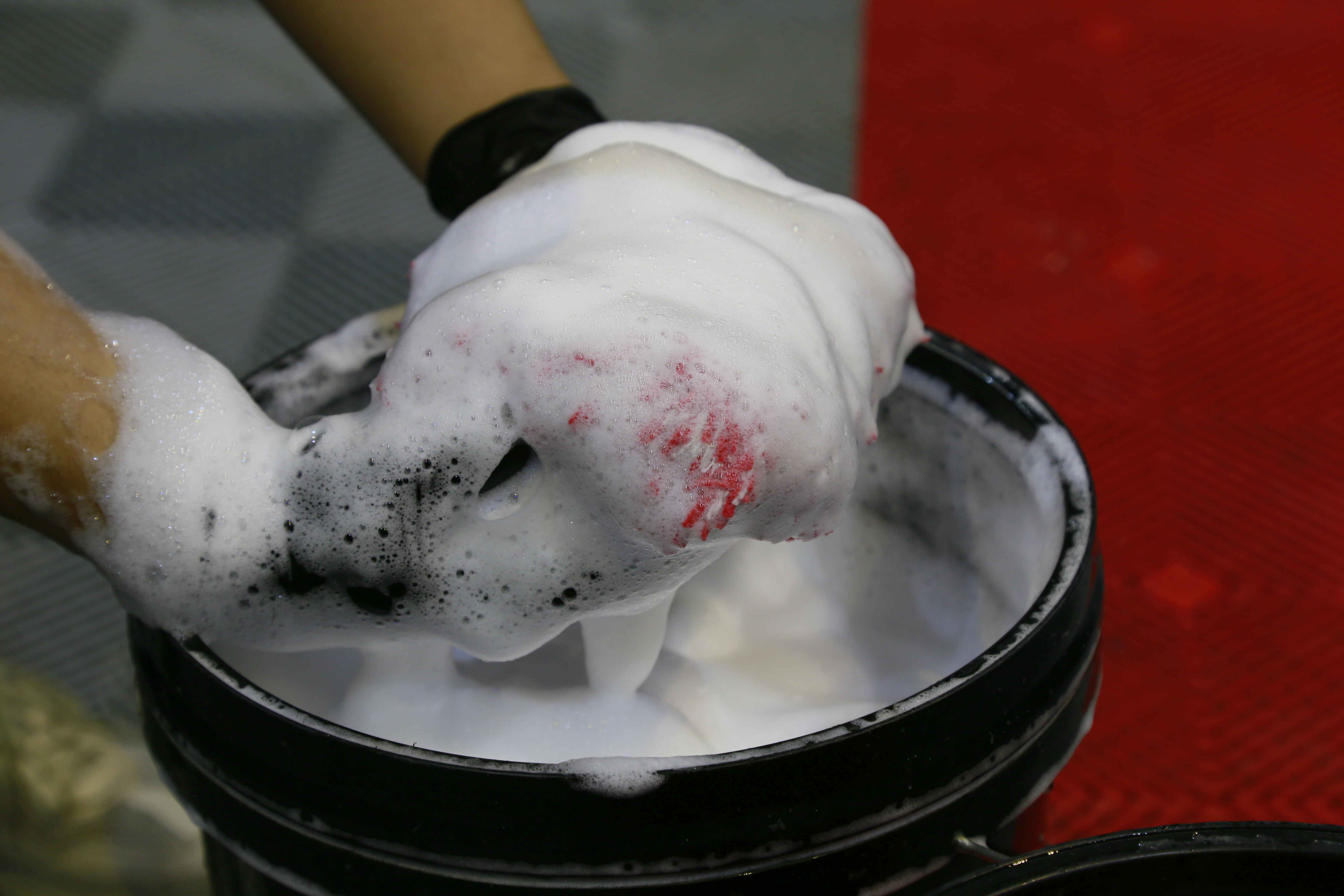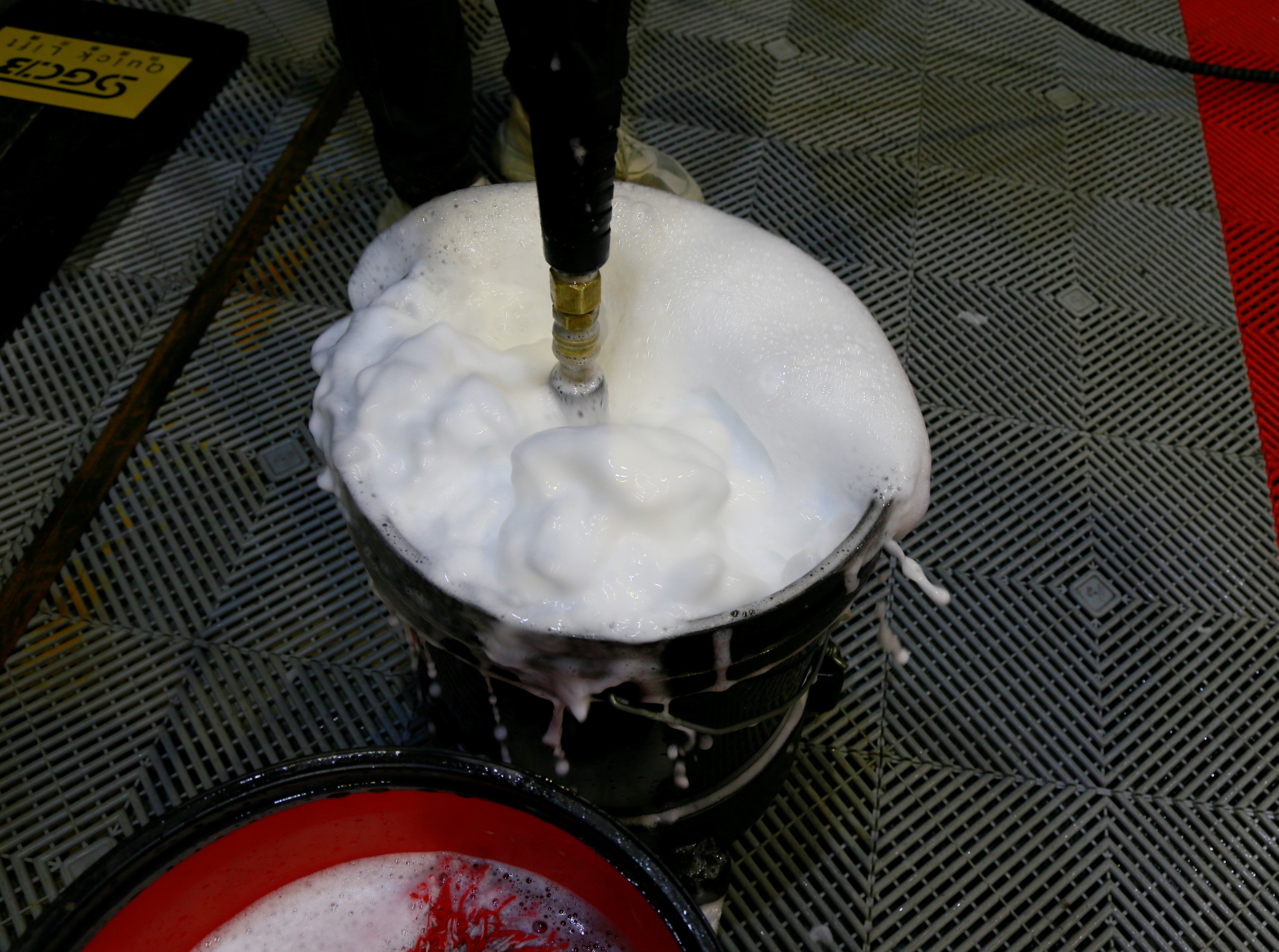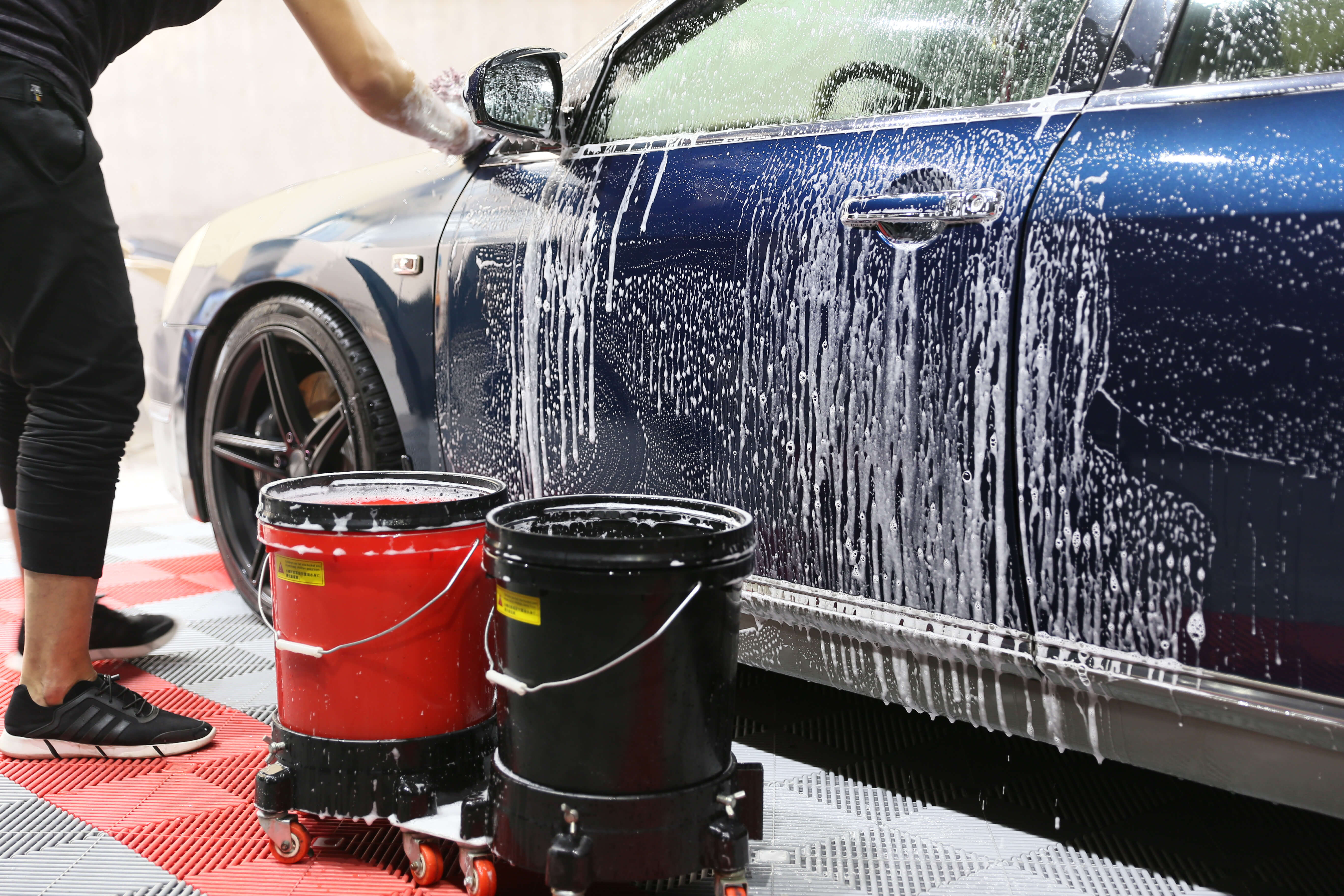Abstract: Two chloramine sterilization processes including chlorine followed by ammonia and ammonia followed by chlorine are simulated. APA6000 monochloramine analyzer based on sequential indigo blue method and other different analytical instruments are used to detect free residual chlorine, total residual chlorine, and The content of chloramine and ammonia nitrogen changes. The results show that the APA6000 monochloramine analyzer can accurately determine the content of monochloramine and free ammonia in water. Based on the accurate measurement results, this paper proposes a feasible automatic control method for adding chlorine and ammonia to the chloramine disinfection process to make up for the shortcomings of the process in the past.
Keywords: chloramine disinfection; sequential indophenol blue method; monochloramine; free ammonia; automatic control of adding chlorine and ammonia; APA6000
Precise Control and Optimization Techniques on Chloramine Disinfection Process
-A new On-line Monitoring Technique on Monochloramine and Free Ammonia
Zheng Bo1, Yang Jia-jian1, Qian Wen-jiao1, Henry Shi1, Qi Yun-qiang2, Zheng Meng-qian2
(1. HACH Company, Beijing, 10004, China; 2. Xinkaihe WTP, Tian Jin, 300240, China)
[Abstract] Simulate "first chloramines, then ammonia" and "first ammonia, then chloramines" in chloramine disinfection process, and monitor the concentration of free chlorine, total chlorine, monochloramine and ammonia with APA6000 and other instruments. The results show that the APA6000 , with sequential indophenal blue method, can accurately measure the concentration of monochloramine and free ammonia. Based on this, we design an alternative technique to precise control of chlorine dosing and ammonia dosing in chloranine disinfection processs, remedy the defects of this process.
ã€Key Words】 monochloramine, auto-control of monochloramine disinfection
As an important barrier to ensure the sanitary safety of drinking water, disinfection is the most important link in the water treatment process. At the beginning of the last century, people used chlorine as a disinfectant in the water treatment industry. For more than 100 years, the chlorine disinfection process is still the most popular drinking water disinfection process, making important contributions to the control of water-induced diseases by humans. However, chlorine disinfection has its inherent defects, such as harmful disinfection by-products, poor stability, and poor ability to inactivate viruses, which has prompted people to find alternative disinfectants and processes. Chloramine has been proposed as an alternative disinfectant. It has the advantages of less disinfection by-products and longer disinfection effect. In particular, the drinking water sources in our country are generally poor, and the chlorination process is limited. The chloramine disinfection process will be an alternative disinfection technology. At present, chloramine disinfection process has been adopted in many urban water plants in China [1].
The application of on-line water quality analysis instruments in water plants has been widely accepted. On the one hand, it can monitor the changes in water quality in real time, and on the other hand, it can control the technological process through the feedback signal of the instrument to optimize the benefits [2]. However, for the chloramine disinfection process, most water plants only control the ratio of added chloramine to 3: 1 ~ 5: 1 based on experience [3, 4], how to maximize the benefits through online instrument control during the process To be studied. In addition, the research on the analysis method of ammonia nitrogen, an important parameter in the process, is also blank. People continue to use online instruments designed according to common analysis methods, ignoring the need to pre-treat samples under these process conditions. In order to accurately measure the fact of ammonia nitrogen in water.
In view of this, the author used different analysis methods and instruments to examine the measurement results and changes of free residual chlorine, total residual chlorine, monochloramine, ammonia nitrogen and other parameters under different dosing orders and chlorammine ratios. The APA6000 monochloramine analyzer, which uses the principle of sequential indigo blue analysis, was mainly investigated, and its application prospect in the chloramine disinfection process was discussed.
1 Experimental part
1.1 Test method
Configure a number of about 2.0 mg / L of free residual chlorine (NaClO) solution, then add a certain amount of ammonia nitrogen (NH4Cl) solution to it, mix well and let stand for 1 min to measure the free residual chlorine, total chlorine, monochloramine, Ammonia nitrogen concentration. This process simulates the chloramine disinfection process of chlorination followed by ammonia.
Dispose some 0.4 mg / L ammonia nitrogen (NH4Cl) solution, then add a certain amount of free residual chlorine (NaClO) solution to it, mix well and let stand for 1 min to measure the free residual chlorine, total chlorine, monochloramine and ammonia nitrogen concentration. This process simulates the ammonia-chlorine disinfection process followed by ammonia.
1.2 Analysis method
Free residual chlorine: measured by HACH DR2800 multi-parameter water quality analyzer and HACH CL17 online residual chlorine analyzer, DPD spectrophotometry;
Total residual chlorine: measured by HACH DR2800 multi-parameter water quality analyzer and HACH CL17 online total chlorine analyzer, DPD spectrophotometry;
Monochloramine: measured by HACH APA6000 monochloramine analyzer, sequential indigo blue method;
Ammonia nitrogen: HACH DR2800 multi-parameter water quality analyzer, salicylic acid method and Nessler reagent method; HACH APA6000 monochloramine analyzer, sequential indigo blue method;
1.3 Principle of sequential indigo blue analysis
This method is established by the classic Berthelot reaction. Taking salicylic acid as an example, the reaction process is as follows [5]: ammonia reacts with hypochlorite to form chloramine, and chloramine reacts with salicylic acid to generate 5-amino Salicylic acid is further converted into quinoneimine, and finally quinoneimine and salicylic acid are condensed into indophenol blue. This method has been used as the standard method for ammonia nitrogen analysis.
However, the researchers found that by controlling the presence or absence of hypochlorite in chemical reagents, the reaction could have more applications. Tao Hui et al. Used this reaction for the detection of monochloramine in the chloramine disinfection process of drinking water, and achieved very good results [6]. The US HACH company used the reaction to develop the APA6000 on-line analyzer for simultaneous monitoring of monochloramine, free ammonia, and total ammonia in the chloramine disinfection process of drinking water.
The analysis principle of APA6000 is as follows: in the first analysis, without adding hypochlorous acid, the analysis obtained monochloramine; then in the second analysis, adding hypochlorous acid, the analysis obtained total ammonia; the second result deducts the As a result of one time, free ammonia is obtained. Because the traditional DPD spectrophotometric residual chlorine total chlorine analysis cannot obtain an accurate concentration of monochloramine, the traditional ammonia nitrogen analysis method will be interfered with by chloramine. The sequential indigo blue method used by the APA6000 undoubtedly has Unparalleled superiority.
2. Results and discussion
2.1 Experimental results of ammonia addition in chlorine-containing water
In the chloramine disinfection process, the method of adding chlorine before ammonia is one of the more popular. The advantage is that free chlorine is disinfected in the clear water tank, which can ensure the complete inactivation of microorganisms. The ammonia in the clear water is added to convert the free chlorine into monochloramine in the water to maintain the residual chlorine concentration in the pipe network; the disadvantage is that a large amount of disinfection by-products will be produced [1] .
In this simulation experiment, the ammonia nitrogen solution is added to about 2 ppm of free residual chlorine solution, and ammonia will react with the residual chlorine. Classical break point chlorination theory [7] and chemical kinetic studies show that [8,9], at room temperature, within a certain pH range, when Cl2: N <5, ammonia nitrogen and free residual chlorine will be extremely short It will be converted to monochloramine within 52 hours; when 52: N <10, part of monochloramine will be converted to dichloramine; if Cl2: N> 10, trichloramine will appear. At the same time, when Cl2: N> 7.5, some ammonia nitrogen will be oxidized to nitrogen.
The results of this experiment are shown in Table 1. For the content of disinfectant, it can be seen from the results that as the amount of ammonia nitrogen solution increases: the free residual chlorine concentration gradually decreases; the total residual chlorine concentration is lower than the initial free residual chlorine concentration when Cl2: N> 6.67, and remains the rest Stable initial concentration; the concentration of monochloramine gradually increases when Cl2: N> 5, and the concentration remains constant when Cl2: N <5, and its concentration is equivalent to the total residual chlorine concentration. The above experimental results are consistent with the theory of inflection point chlorine addition: when Cl2: N> 6.67, because part of the residual chlorine is reduced to chloride ions, the total residual chlorine concentration is lower than the initial value, and the theoretical yield of monochloramine is lower Actual yield; when 52: N <6.67, the main products are monochloramine and dichloramine, the yield of monochloramine is close to the theoretical value; when Cl2: N <5, the main product is monochloramine, and its production The rate is consistent with the theoretical value. In the later period, the determination of free residual chlorine content is relatively high, the reason may be that high concentrations of monochloramine will interfere with the determination of residual chlorine [10].
According to the determination principle of ammonia nitrogen salicylic acid method [5], this method is essentially the same as the total ammonia analysis method of APA6000, and the objects it analyzes include free ammonia and monochloramine. Therefore, with the increase of ammonia nitrogen addition, the detection results of these two instruments are getting higher and higher. When Cl2: N> 5, because part of the ammonia nitrogen is converted to dichloramine, trichloramine or even nitrogen, the actual output of total ammonia is lower than the theoretical output. When Cl2: N <5, the actual output of total ammonia is equal to the theoretical output . The effect of chloramine on the determination of ammonia nitrogen by Nessler's reagent method is recognized [5], which is also confirmed in the experimental results. When Cl2: N ≥5, theoretically, there should be no free ammonia nitrogen in the solution, but the actual determination The results show that chloramine produced positive interference during the analysis. Generally speaking, pretreatment is required to remove chloramine interference. The results of free ammonia in APA6000 show that when Cl2: N ≥5, there is no free ammonia in the solution, and only when Cl2: N <5, the free ammonia nitrogen which is consistent with the theoretical amount of addition appears, which is completely consistent with the theory of inflection point chlorine It shows that the APA6000 monochloramine analyzer is accurate and *** in analyzing free ammonia nitrogen.
2.2 Experimental results of adding residual chlorine in ammonia-containing water
The classic chloramine disinfection process is to add chlorine and ammonia simultaneously in the outlet of the filter or in the pipeline before the clear water. The advantage is that the amount of disinfection by-products produced is small, and the attenuation is slow; the disadvantage is that the disinfection effect is poor, and it is not suitable for disinfecting the clear water tank with short contact time [1].
In this simulation experiment, the residual chlorine solution is added to an ammonia nitrogen solution of about 0.4 ppm, and the residual chlorine will react with the ammonia nitrogen. It is consistent with the law of the previous simulation experiment, but the change trend is opposite. According to literature research, the experimental effect of ammonia followed by chlorine is consistent with the experimental effect of chloramine at the same time [4].
The results of this experiment are shown in Table 2. For the content of disinfectant, from the results, it can be seen that with the increase of the amount of free residual chlorine solution: the total residual chlorine concentration gradually increases; when Cl2: N <5, the content of monochloramine gradually increases and is consistent with the theoretical production The rate is consistent, and the concentration of monochloramine gradually decreases when Cl2: N> 5. This can also be explained by the theory of inflection point chlorine addition: when Cl2: N <5, the added ammonia nitrogen is all converted to monochloramine, and when Cl2: N> 5, with the addition of ammonia nitrogen, one chloramine is converted into dichloramine, trichloride Chloramine is produced, resulting in a drop in monochloramine concentration.
Theoretically, with the addition of free residual chlorine, when Cl2: N <5, the concentration of free ammonia nitrogen gradually decreases to 0, while the total ammonia concentration keeps the initial value; when Cl2: N> 5, the total ammonia concentration also begins to decrease. The measurement results of total ammonia and free ammonia nitrogen of APA6000 accurately reflect this change.
2.3 APA6000 control chloramine disinfection process plus chlorine and ammonia
According to the principle of chloramine disinfection process, the most ideal chlorine and ammonia addition control should be to control the total residual chlorine concentration within the standard allowable range, and Cl2: N should be added at an accurate 5: 1, so that the production of monochloramine The rate will reach maximum. Excessive chlorine addition not only makes the advantages of the chloramine disinfection process over the traditional chlorine disinfection process disappear and the economic benefits are lost, but the generated dichloramine will make the tap water smell; and the addition of excessive ammonia nitrogen will not only lead to the loss of economic benefits, What is more serious is that excessive ammonia nitrogen entering the pipe network will affect the biological stability of water quality. The ammonia oxidizing bacteria and nitrosating bacteria present in the pipe network will convert the excess ammonia nitrogen into nitrite which is extremely harmful [11].
At present, the use of advanced online instruments to control the addition of disinfectants in water plants is relatively mature. Many water plants in the chlorine disinfection process use residual chlorine analyzers to control the addition of chlorine adding machines [12]. However, in the chloramine disinfection process, due to its complicated disinfection system, according to different chloramine ratios, there will be complex and variable disinfection systems such as monochloramine, dichloramine, trichloramine, free residual chlorine, etc. This is how to choose Appropriate online water quality analysis instruments control the addition of chlorine and ammonia to create difficulties. The total residual chlorine analyzer cannot distinguish between monochloramine, dichloramine, trichloramine and free residual chlorine, and cannot indicate the correct dosage. The control of ammonia addition is more difficult. The common ammonia nitrogen analyzer is limited by its principle, and it will be interfered by chloramine and cannot accurately measure free ammonia. Therefore, until now, in the water plant adopting the chloramine disinfection process, the addition of chlorine and ammonia is mainly based on the experience of ***, using proportional addition.
The APA6000 monochloramine analyzer relies on its special analysis principle to solve this problem. Taking the current typical chloramine disinfection process-sequential chlorination disinfection process as an example (see Figure 1), this process takes advantage of the rapid disinfection of free chlorine to inactivate microorganisms and the low production of chloramine disinfection by-products. The disinfection process of free chlorine for a short time, and then converted to chloramine disinfection [13].
 Figure 1 Sequential chlorination disinfection process and feasible dosing control of adding chlorine and ammonia
Figure 1 Sequential chlorination disinfection process and feasible dosing control of adding chlorine and ammonia Using the APA6000 monochloramine analyzer, combined with information such as flow rate, control the amount of chlorine added, and control the concentration of monochloramine in the factory water within the standard allowable range. At the same time, using the measurement results of APA6000 free ammonia nitrogen, the concentration of ammonia nitrogen in the delivered water is controlled in a low range (for example, 0.05 mg / L). As a result of this control, it can be ensured that the main component of the disinfectant in the factory water is monochloramine, and it can also ensure that the ammonia is not added in excess. If there is a pre-chlorination process in the process, a residual chlorine analyzer can be added at the outlet of the filter tank as a pre-feedback for post-chlorination, and the dosage is controlled together with the monochloramine signal and flow of the monochloramine analyzer.
3. Conclusion
â‘ The APA6000 monochloramine analyzer can accurately measure the concentration of monochloramine and free ammonia nitrogen in the water body, which makes up for the shortcomings of the application of common online water quality analysis instruments in the chloramine disinfection process.
â‘¡ APA6000 monochloramine analyzer can be used to measure monochloramine and free ammonia at the same time. Through these two measurement results, the dosage of chlorine and ammonia in the chloramine disinfection process can be controlled separately, which can achieve ideal control of adding chlorine and ammonia. To maximize the yield of monochloramine. This can overcome various problems caused by adding chlorine and ammonia in the past in the chloramine disinfection process.
references
[1] He Wenjie, Li Weiguang, Zhang Xiaojian, et al. Safe drinking water security technology [M]. Beijing: China Building Industry Press, 2006.
[2] Yang Yanfang. Application of automatic instruments in water plants [J]. China Water Supply and Drainage, 1995, (02).
[3] Xie Haiying. Research on the operation mode of chloramine disinfection in the No.6 Waterworks of Chengdu [D]. Chongqing University, 2003.
[4] Sun Xiaohang. Experimental study on chloramine disinfection of tap water in Chengdu [D]. Chongqing University, 2003.
[5] Editorial Committee of Monitoring and Analysis Methods for Water and Wastewater, Guidelines for Monitoring and Analysis Methods of Water and Wastewater-Volume 1 [M]. Beijing: China Environmental Science Press, 1990.
[6] Tao Hui, Wang Ling, Li Xing, Wang Huaping, Li Guibai. Determination of monochloramine by salicylic acid spectrophotometry during chloramine disinfection of drinking water [J]. China Water Supply and Drainage, 2009, (28).
[7] Yue Shunlin. Chlorine disinfection at the break point of tap water [J]. Chemical World, 1981, (10)
[8] White, GC Handbook of Chlorination and Alternative Disinfectants [M]. New York: Van Nostrand Reinhold, 1992.
[9] AWWA and ASCE (American Society of Civil Engineers). Water Treatment Plant Design second edition [M]. New York: McGraw-Hill, Inc, 1990.
[10] Jin Yinlong, E Xueli, Chen Yayan, Zhang Lan, etc. GB / T 5750.11-2006 Standard Test Method for Drinking Water Disinfectant Index [S]. Beijing: Ministry of Health of the People's Republic of China; China National Standardization Management Committee, 2006 .
[11] Chen WL, Jensen J N. Effect of chlorine demand on ammonia break point curve: model development, validation with nitrite and app lication to municipal wastewater [J]. Water Environ Res, 2001, 73 (6).
[12] Wei He, Li Qi, Diao Xiang. Automatic control transformation of chlorination process in waterworks [J]. China Water Supply and Drainage, 2006, (24).
[13] Zhang Xiaojian, Chen Chao, He Wenjie, Han Hongda. Sequential water treatment and disinfection method of transchloramine after short-term free chlorine [P]. Chinese Patent: CN1583591, 2005-02-23.
The one way of car washing is two buckets , that can save water. The design of bucket to avoide scratch of car paint during work cause of grit guard, you still can wash polisher pads too. The spare parts included cover, grit guard, dolly, bucket, washer.




If you wanna know more about it , pls contact with us.
Best Car Washing Supplies,Car Wash Bucket,Car Wash Bucket Kit,Car Wash Bucket With Grit Guard,Car Wash Two Bucket Method
SGCB COMPANY LIMITED , https://www.sgcbautocare.com